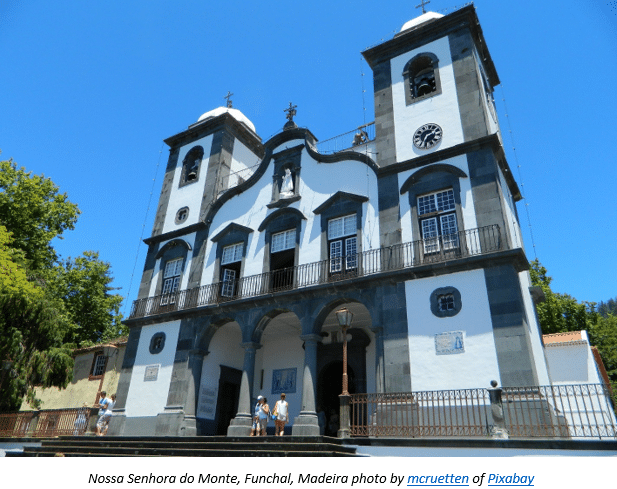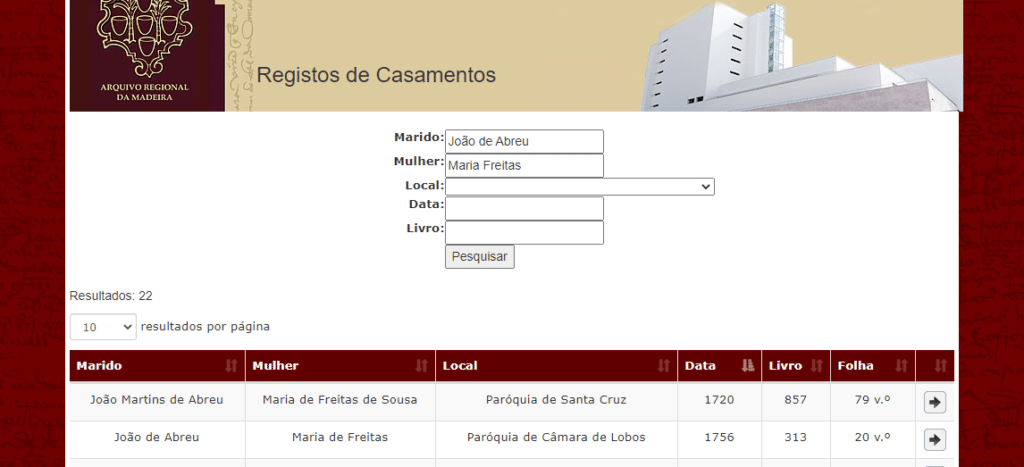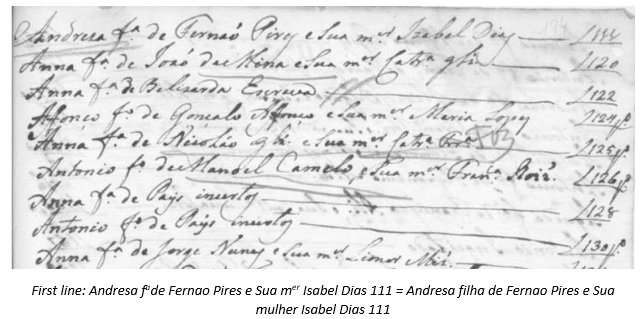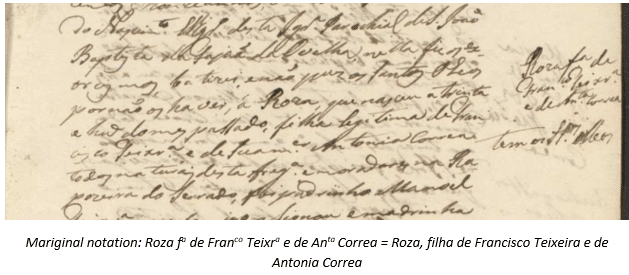Researching in Madeira Part 2 : The Methodology
 27
27Aug

When searching for your ancestors in Madeira, you follow the usual genealogical methodology with some modifications to account for the difficulties specific to Portuguese and island research. Portuguese surname traditions present some unique challenges, and the abundance of abbreviations in early records can be daunting. Furthermore, the size of the islands means that many individuals are related in more than one way, and there are also some individuals of the same name in the same town. That being said, here's part 2 of our Madeira Research series.
Madeira Research Part 2
Start with a Marriage: Usually, when starting research in a new country, you need to have a specific hometown to know where to begin your search. However, the Madeira Regional Archive (ABM) marriage index may allow you to continue research in Madeira even if you do not know the exact location. If you know the names of the bride and groom as well as their approximate year of marriage, you may find a match in the index! There is a place to add the year of marriage, but it only allows you to search one year at a time, so it is usually better to just sort the results by date and consider the ones that are close to the year you are looking for. The Search terms are Marido (husband), Mulher (wife), Local (location), Data (date), and Livro (book). These terms correspond to the result columns, and you can sort by any column to facilitate your search. There is one additional result column: Folha (page), which will help you quickly locate a marriage record in FamilySearch of the ABM collection. If you do not know the hometown, you will likely want to sort by year. If you do know the hometown, you may want to sort by location to first determine whether there is a good match for that location, but make sure that you consider matches in other locations, in case they were married somewhere else. Sometimes, a marriage will be recorded in multiple locations: bride’s home parish, groom’s home parish, and place of marriage. If you find multiple entries for one couple, be sure to look at all of them.

Once you have found a plausible match, you’ll want to look for the actual image. Clicking on the arrow at the end of the row may also provide additional information.

If you only have a single individual but know their parents’ names, you can start by searching for the parents’ marriage as a way of determining the hometown and narrowing down the time of christening. No matter who you are looking for, it is best to start by searching for a marriage whenever possible, because the surname practices make the search in christening records quite difficult.
Diving into Christening Records: Many Latin cultures follow the naming pattern of first name, second name, father’s last name, mother’s last name. The Portuguese have no such pattern. Names are usually seen as first name, second name, surname, surname. The two surnames do not have to come from the father and mother, and they do not even have to come from family. The name recorded in the christening record is either the first or second name. None of the child’s surnames are recorded in their christening record, which makes it difficult to locate an individual without knowing their parents’ names.

Indexes are also complicated but can be of use. Records containing indexes do not index individuals by their last names but by their first names. Instead of having a page listing all of the Araujos christened between 1799 and 1865, there is a page of Annas. An index of christenings usually lists the father’s name after the child’s, so that can be helpful in narrowing it down to a specific entry. Otherwise, you just have to look at the entries for all Annas to see if the parents are correct. In books where no indexes are present, marginal notations can be of help. Look for the individual’s name in the margin and search for the one with the correct parents. When I am searching for a christening, I start after the parents’ marriage and search forward in time. If I do not find the child there, then I will check a couple of years before the parents’ marriage. Be sure to take into account the age of the individual at marriage to help narrow down the search.

Depending on the time period, a christening record will contain the following information in this order:
[Date of christening spelled out in words], [Name of Church, village, counsel, diocese], I baptized a child of the sex [male or female], to whom I gave the name [first or second name], who was born on [date of birth], [legitimate or illegitimate] child (number of child with that name) of [full name of father and full name of mother], [father’s occupation or land ownership], [nativity and residence of parents given together or separate], paternal grandchild of [grandfather’s name and grandmother’s name] and maternal of [grandfather’s name and grandmother’s name]. The godparents were [first godparent with occupation and residence], [2nd, etc.] Signatures
The oldest entries contain only the basic genealogical information: date of christening, child’s name, father’s name, mother’s name, godparents.
The godparents are often relatives, and keeping note of their names and searching the ABM index for their marriages can help determine whether or not they are siblings of the parents.
Death and Burial Records: Death and burial records are hit or miss. When available, they should be consulted, but they will not always be available or complete. They can help in determining whether the first of two siblings with the same name died in infancy. This is usually the case, although it is also possible that the two siblings went by their second names, and only their first name was recorded.
Reading the Records: Let’s start with what makes this easy! The records are in good ‘ol fashioned cursive, just like you learned in elementary school. You don’t have to learn a new alphabet, and you can use any translator you like if you do not read Portuguese. Once you are used to the keywords, you will learn where to find the information you want without much reading. Here is a genealogical word list to help you with the vocabulary as well as spelling variations you may encounter.
The biggest obstacle to reading the records is the multitude of abbreviations used. The genealogical word list also contains some resources to help with abbreviations, but thankfully the most recent records do not use abbreviations. If you start in the 1800s, you will get a feel for the content of the records before frequent abbreviations muddle your understanding back in the 1500s to 1700s.
The most important skill for interpreting and navigating these records is getting a feel for the pattern of the entries. The consistent format means you do not have to read every word of a record in order to find the person you are looking for. Even when there are no indexes or marginal notations, it can be easy to find the right entry.
Beware of the Same Names: Madeira is made up of two small islands. With a limited number of first names and surnames in use, there are sometimes people with the same or similar names living in the same town or nearby. An individual was not always recorded with all of their names, so wherever possible, examine family members to verify that you have found the correct individual. Padrinhos (godparents) given in christening and marriage records can also be a huge asset!
Happy Searching! The experts at Price Genealogy can assist you as needed!
By Karynne
Have you ever done any Madeira research? Let us know in a comment below!
